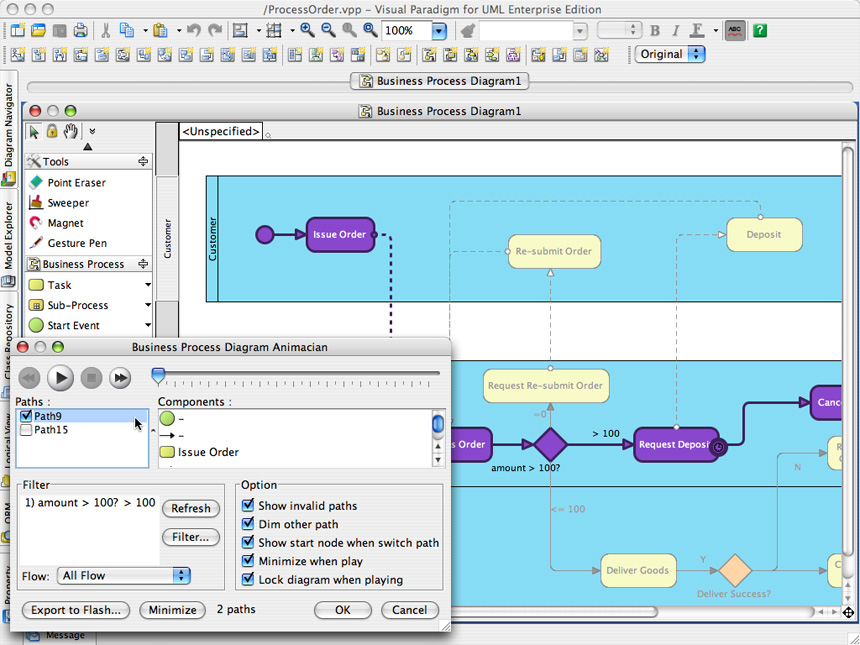


 Visual Paradigm has announced a significant upgrade to its Visual Paradigm for UML (VP-UML) 7.0. With new capabilities supporting reference project elements across shared development projects for facilitating effectively teamwork development , compare and contrast diagrams visually for simplifying model traceability and change management.
Visual Paradigm has announced a significant upgrade to its Visual Paradigm for UML (VP-UML) 7.0. With new capabilities supporting reference project elements across shared development projects for facilitating effectively teamwork development , compare and contrast diagrams visually for simplifying model traceability and change management. 

 I have been using Visual Paradigm for UML for 2 years. I am extremely expressed in both its ease of use as well as its breadth of features.
I have been using Visual Paradigm for UML for 2 years. I am extremely expressed in both its ease of use as well as its breadth of features.